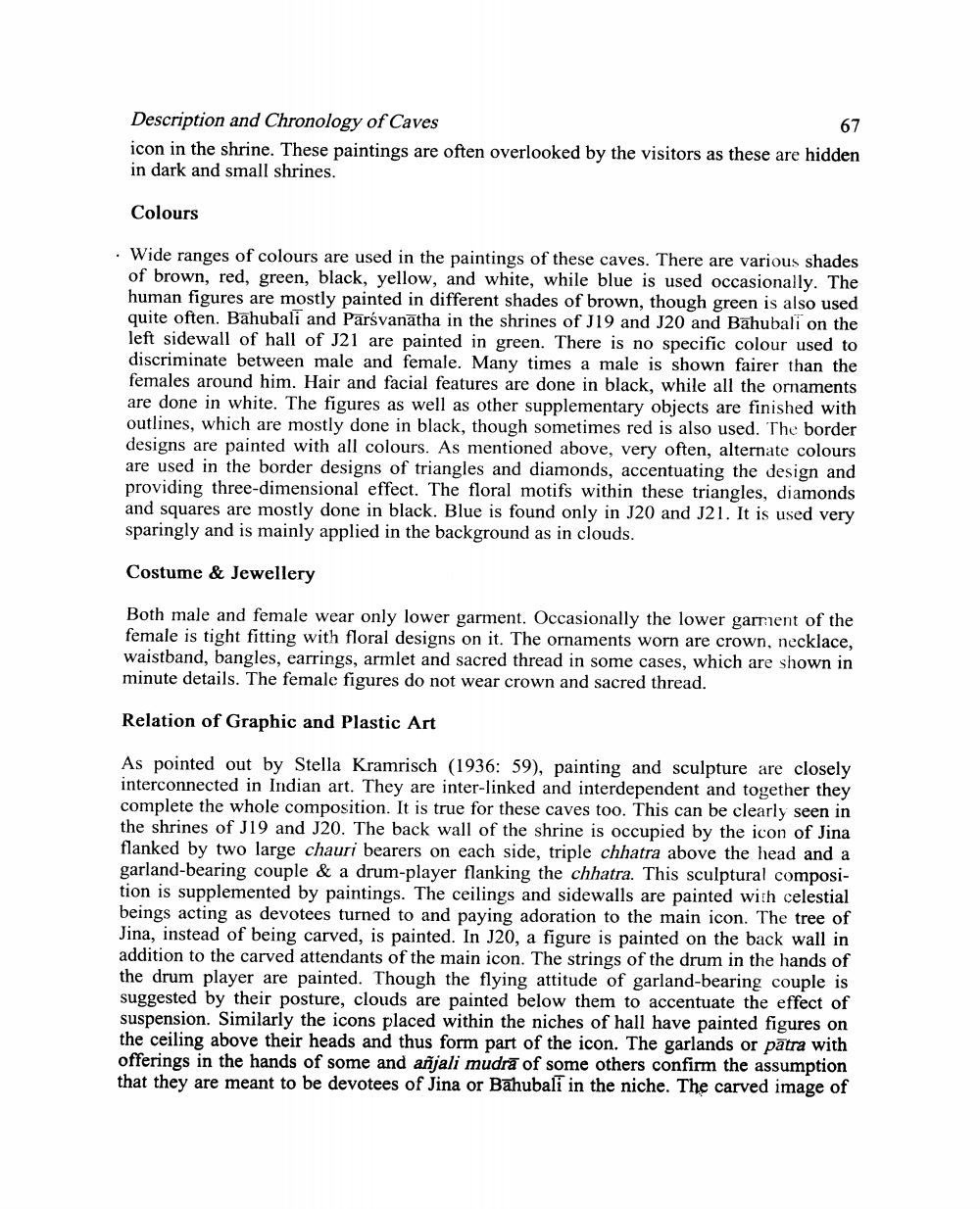________________
67
Description and Chronology of Caves icon in the shrine. These paintings are often overlooked by the visitors as these are hidden in dark and small shrines.
Colours
• Wide ranges of colours are used in the paintings of these caves. There are various shades of brown, red, green, black, yellow, and white, while blue is used occasionally. The human figures are mostly painted in different shades of brown, though green is also used quite often. Bahubali and Parsvanatha in the shrines of J19 and J20 and Bahubali on the left sidewall of hall of J21 are painted in green. There is no specific colour used to discriminate between male and female. Many times a male is shown fairer than the females around him. Hair and facial features are done in black, while all the ornaments are done in white. The figures as well as other supplementary objects are finished with outlines, which are mostly done in black, though sometimes red is also used. The border designs are painted with all colours. As mentioned above, very often, alternate colours are used in the border designs of triangles and diamonds, accentuating the design and providing three-dimensional effect. The floral motifs within these triangles, diamonds and squares are mostly done in black. Blue is found only in J20 and J21. It is used very sparingly and is mainly applied in the background as in clouds.
Costume & Jewellery
Both male and female wear only lower garment. Occasionally the lower garment of the female is tight fitting with floral designs on it. The ornaments worn are crown, necklace, waistband, bangles, earrings, armlet and sacred thread in some cases, which are shown in minute details. The female figures do not wear crown and sacred thread.
Relation of Graphic and Plastic Art
As pointed out by Stella Kramrisch (1936: 59), painting and sculpture are closely interconnected in Indian art. They are inter-linked and interdependent and together they complete the whole composition. It is true for these caves too. This can be clearly seen in the shrines of J19 and J20. The back wall of the shrine is occupied by the icon of Jina flanked by two large chauri bearers on each side, triple chhatra above the head and a garland-bearing couple & a drum-player flanking the chhatra. This sculptural composition is supplemented by paintings. The ceilings and sidewalls are painted with celestial beings acting as devotees turned to and paying adoration to the main icon. The tree of Jina, instead of being carved, is painted. In J20, a figure is painted on the back wall in addition to the carved attendants of the main icon. The strings of the drum in the hands of the drum player are painted. Though the flying attitude of garland-bearing couple is suggested by their posture, clouds are painted below them to accentuate the effect of suspension. Similarly the icons placed within the niches of hall have painted figures on the ceiling above their heads and thus form part of the icon. The garlands or pătra with offerings in the hands of some and añjali mudrā of some others confirm the assumption that they are meant to be devotees of Jina or Bahubali in the niche. The carved image of




